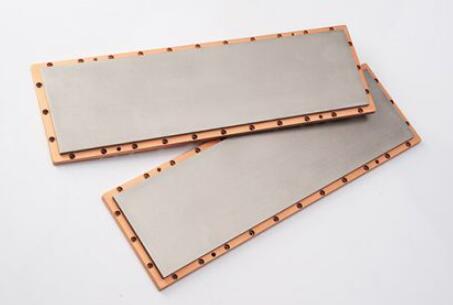How Does Grid Spring Coupling Work Effectively?
Oct. 19, 2024
Huading contains other products and information you need, so please check it out.
Understanding how grid spring coupling works requires a dive into the intricate dance of mechanical forces and engineering design. At the heart of this system lies an ingenious combination of springs and grids, designed to facilitate effective torque transmission while accommodating motion misalignments. In various industries, from automotive to aerospace, grid spring couplings provide significant advantages, making them a preferred choice in extreme conditions.
The Basic Principle of Grid Spring Coupling
Grid spring coupling operates primarily through a series of spring-loaded components that engage with each other to transmit torque. The essential components include the grid, which serves as a flexible link, and the springs, responsible for accommodating misalignment and varying loads. This ingenious setup not only helps in maintaining continuous torque transmission but also curtails the risk of failure due to shock loads.
Advantages of Grid Spring Coupling
One of the most prominent features of grid spring couplings is their ability to absorb vibrations and shocks. In any rotating machinery, excessive vibrations can lead to component wear and unexpected failures. By utilizing the inherent flexibility of springs within the coupling, grid spring couplings can effectively dampen these vibrations, thereby enhancing the longevity of machinery.
Additionally, their design allows for angular, parallel, and axial misalignments, making them extremely versatile. This capability is essential in applications where shafts may not be perfectly aligned due to thermal expansion, manufacturing tolerances, or equipment settling over time. Grid spring couplings gracefully accommodate these misalignments without compromising performance, which is crucial in high-speed applications.
Key Factors for Effective Operation
To fully leverage the effectiveness of grid spring couplings, certain factors must be considered. Proper alignment during installation is paramount. Although these couplings are tolerant of misaligned shafts, excessive misalignment can still lead to diminished performance and increased wear over time.
Selection of materials is another crucial element. High-quality materials enable the spring to withstand varying loads and fatigue, while optimizing the grid's flexibility. Manufacturers often employ specialized alloys or heat-treated materials designed to endure harsh operational environments, ensuring that the coupling remains functional over its intended lifespan.
Choosing the Right Type of Grid Spring Coupling
While grid spring couplings shine in many applications, understanding the right type for your specific needs is essential. Depending on the application, you may opt for a standard grid spring coupling, which suits general industrial use, or a high-torque variant designed for demanding environments. Advanced options can include those specifically engineered for high-speed applications, where durability and performance under stress are critical.
Explore more:Minerals & Metallurgy
What Mesh is Used for Gabions?
Top Benefits of Industrial Scrubber Stainless Steel Clad Plates
Why Choose a Stainless Steel Backing Sheet?
Top Benefits of Using Steel Wrapping Plates Today
How to Choose Expanded Metal Mesh
What is Granulated Calcium Carbonate?
Another consideration is the size of the coupling. A coupling that is too small may not withstand demands, while one that is too large could become unwieldy and counterproductive. Conducting detailed calculations and simulations can guide engineers in selecting the most appropriate size and type.
Applications in Various Industries
The versatility of grid spring couplings opens their utilization across various sectors. In the automotive industry, these couplings contribute to the reliability of drivetrain assemblies, ensuring smooth power transfer between components. In power generation, they're utilized in turbines, supporting efficient energy conversion while managing vibrational forces.
Aerospace applications also benefit from grid spring coupling technology. Aircraft components rely heavily on these couplings to ensure structural integrity and performance in demanding conditions. Given the rigid standards associated with aerospace design, the effectiveness and trustworthiness of grid spring couplings can’t be understated.
Maintenance and Lifespan
Like all mechanical systems, grid spring couplings require periodic inspection and maintenance to ensure optimal performance. Regular checks for wear and tear on the springs and grid can prevent catastrophic failures and enhance lifespan. Manufacturers often recommend lubricating the coupling at specified intervals, which also aids in reducing friction and prolonging service life.
When the springs show signs of fatigue or the grid exhibits wear, timely replacement becomes imperative. Knowing when to replace these components can save you significant costs associated with unplanned downtimes and equipment failures.
Conclusion
Grid spring couplings epitomize the harmony between mechanical design and functionality. Their ability to facilitate torque transmission while accommodating misalignment makes them an irreplaceable asset in various industries. Understanding their working principles, choosing the right type, and ensuring proper maintenance can lead to enhanced operational efficiency and reliability. In an age where machinery continues to evolve, the role of grid spring coupling will undoubtedly remain significant, embedding itself as a trusted solution for engineers and manufacturers alike.
Copper Clad Steel Coil for Russia: The Ultimate Buyer’s Guide
Unveiling Nickel Clad Steel: Top Benefits & Uses
Exploring the Benefits of GI Coils in Surgery
Key Benefits of Titanium Clad Plates for Power Plants
Top Trends for Titanium Clad Plate in 2024
Oil Titanium Clad Plates vs. Traditional Materials: Which Is Superior?
Unlocking Efficiency: The Essential Benefits of Liquid Tank Stainless Steel Clad Plates for Your Operations
265
0
0
Related Articles





Comments
All Comments (0)